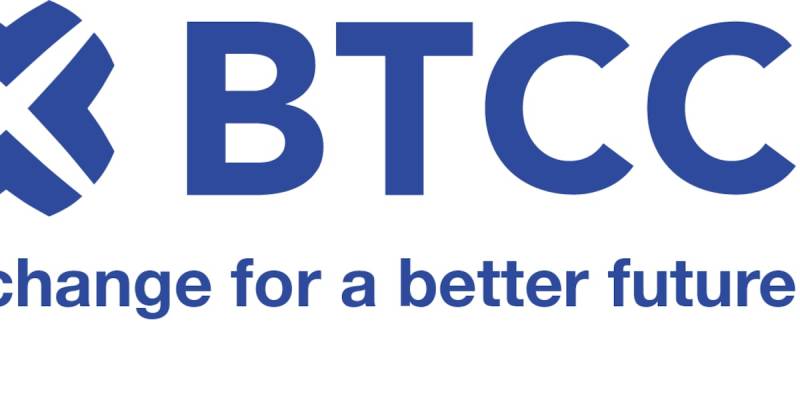 |
|
 |
|
 |
|
 |
|
 |
|
 |
|
 |
|
 |
|
 |
|
 |
|
 |
|
 |
|
 |
|
 |
|
 |
|
尽管有米塞斯、哈耶克和弗里德曼等思想家的理想,但储备资产鼓励囤积,造成流通障碍,导致停滞

Bitcoin, cryptocurrency, Web3
比特币、加密货币、Web3
Throughout history, reserve assets have played a pivotal role in shaping monetary systems. From gold bullion sitting in the vaults of the Bank of England (BoE) to the U.S. dollar’s post-Bretton Woods hegemony, the concept of a reserve asset has always carried a double-edged sword. On one side lies the promise of stability and trust while empowering the empire with the most liquid assets; on the other, the creeping specter of corruption, inflation, and economic inefficiency.
纵观历史,储备资产在塑造货币体系方面发挥着关键作用。从英格兰银行(BoE)金库中的金条到布雷顿森林体系后的美元霸权,储备资产的概念始终是一把双刃剑。一方面是稳定和信任的承诺,同时为帝国提供最具流动性的资产;另一方面,腐败、通货膨胀和经济低效率的幽灵悄然蔓延。
This was the brilliance of Keynes. He gets rightfully criticized for devaluing the purchasing power of the fiat unit, but few understand that Keynes knew this would be the case. His goal was for the British pound to simply outperform other fiat currencies and drive economic growth in the belief that economic growth would also outpace the devaluation of spending power in the United Kingdom. With few exceptions, he was right. This economic philosophy was transplanted onto the U.S. monetary system with some updates in sophistication, leading to similar outcomes: incredible creation of wealth for people in the U.S., despite the fact that purchasing power of the currency was constantly eroding.
这就是凯恩斯的高明之处。他因贬低法定单位的购买力而受到正确的批评,但很少有人明白凯恩斯知道情况会如此。他的目标是让英镑跑赢其他法定货币并推动经济增长,因为他相信经济增长也将超过英国消费能力的贬值。除了极少数例外,他是对的。这种经济理念被移植到美国的货币体系中,并进行了一些复杂的更新,导致了类似的结果:尽管货币的购买力不断下降,但为美国人民创造了令人难以置信的财富。
Sounds like I’m a Keynesian, huh? I’m not. The system still has major flaws, but we must at least understand their ideas before we deconstruct them.
听起来我是凯恩斯主义者,是吧?我不是。该系统仍然存在重大缺陷,但在解构它们之前,我们至少必须了解它们的想法。
As a staunch advocate of sound money and the principles behind the gold standard, I deeply respect systems that prioritize accountability, scarcity, and real economic balance. I’m essentially a classic Austrian on the topic of monetary economics, but the idea has always had a practical limitation of trust in reserve assets for full reserve banking and lending. Essentially, it’s near impossible to trust that the circulating supply of money is always redeemable 1:1 for the reserve asset, and even if you could redeem, why would you want to be illiquid? So we are stuck with trusting the banks, and their incentives tell them to act like Keynesians, even if they are philosophically Austrians.
作为健全货币和金本位背后原则的坚定拥护者,我深深尊重优先考虑问责制、稀缺性和实际经济平衡的制度。在货币经济学这个话题上,我本质上是一个典型的奥地利学派,但这个想法始终对充分储备银行和贷款的储备资产信任存在实际限制。从本质上讲,几乎不可能相信流通的货币供应量总是可以 1:1 兑换储备资产,即使你可以赎回,为什么你会想要缺乏流动性呢?因此,我们不得不相信银行,而银行的动机告诉他们要像凯恩斯主义者一样行事,即使他们在哲学上是奥地利主义者。
Reserve assets, in practice, are antithetical to Austrian ideals. Despite the ideals of thinkers like Mises, Hayek, and Friedman, reserve assets encourage hoarding, creating barriers to circulation—leading to stagnation, which then greases the wheels of fractional reserve lending—turning what should be a stable foundation for commerce into an inflationary house of cards.
实际上,储备资产与奥地利学派的理想是对立的。尽管有米塞斯、哈耶克和弗里德曼等思想家的理想,但储备资产鼓励囤积,造成流通障碍,导致经济停滞,进而推动部分准备金贷款的运转,将本应是稳定的商业基础变成了通货膨胀的房子的卡片。
Satoshi Nakamoto didn’t simply design a digital asset; he engineered a solution to the inherent corruption of opaque reserve systems. Bitcoin offers the sound money properties of gold, the practical accounting style of cash, and the reduced friction of a global, decentralized payment network. When circulated, Bitcoin balances economic incentives naturally. It’s money in its purest form: not a symbol of value trapped in vaults, but value in motion, fueling commerce and productivity, and it can natively be the reserve asset underlying real-world asset tokens—if the network is implemented for scalability that is…
中本聪不仅仅是设计了一种数字资产;他还设计了一种数字资产。他设计了一个解决不透明储备系统固有腐败问题的方案。比特币提供了黄金的健全货币属性、现金的实用记账方式以及全球去中心化支付网络的减少摩擦。当比特币流通时,自然会平衡经济激励。它是最纯粹形式的货币:不是金库中价值的象征,而是流动的价值,促进商业和生产力,并且它本身可以成为现实世界资产代币的储备资产——如果网络是为了实现可扩展性而实现的……
Unfortunately, a well-connected cabal of small block “Bitcoin” influencers—led by figures like Samson Mow and Adam Back—are attempting to twist Bitcoin’s original vision. They propose a dystopian system in which Bitcoin becomes a digital reserve asset, akin to gold bars locked away, while a secondary system of fiat inflation, fractional lending, and speculative debt takes place on another network where it is more difficult to audit. Under their scheme, Bitcoin wouldn’t be the revolutionary tool for peer-to-peer commerce Satoshi envisioned but a static asset backing an opaque, centralized financial apparatus, a more technocratic version of the central banking system that we already have.
不幸的是,一个由小区块“比特币”影响者组成的小集团——以 Samson Mow 和 Adam Back 等人物为首——正试图扭曲比特币最初的愿景。他们提出了一个反乌托邦系统,其中比特币成为一种数字储备资产,类似于被锁定的金条,而法币通胀、部分贷款和投机债务的二级系统则发生在另一个更难以审计的网络上。根据他们的计划,比特币不会成为中本聪设想的点对点商业的革命性工具,而是一种支持不透明的集中式金融机构的静态资产,这是我们已经拥有的中央银行系统的更加技术官僚的版本。
This isn’t a theoretical danger; it’s happening right now.
这并不是理论上的危险,而是实际存在的。它现在正在发生。
And it’s not just happening in the U.S. Argentina is mining bitcoin, El Salvador, and now Poland looks to be joining the chorus of lambs to the slaughter of the Tetheral Reserve! Oh wait… I haven’t mentioned Tether yet in this article.
这不仅发生在美国,阿根廷也在开采比特币,萨尔瓦多现在也加入了屠杀 Tetheral Reserve 的行列!哦等等……我在本文中还没有提到 Tether。
Consider the role of Tether (USDT), the shadowy stablecoin issued by iFinex. The BTC-as-a-reserve-asset model is at the core of their operation. BTC backs the issuance of Tether, which is then fractionally lent out to traders and leveraged to inflate the value of cryptocurrencies on exchanges and fiat-like derivatives. This creates an endless boom-and-bust cycle, where those closest to the issuance—“early adopters” or whales—can front-run the economy with insiders from the exchanges while everyone else struggles to catch up.
考虑一下 iFinex 发行的影子稳定币 Tether (USDT) 的角色。比特币作为储备资产模型是其运营的核心。 BTC 支持 Tether 的发行,然后将其部分借给交易者并利用杠杆来抬高交易所和类似法定衍生品上的加密货币的价值。这就造成了一个无尽的繁荣与萧条循环,那些最接近发行的人——“早期采用者”或鲸鱼——可以与交易所的内部人士一起引领经济发展,而其他人都在努力追赶。
Sound familiar? It should. This is precisely how the central banking system has functioned for over a century. While Samson Mow and his ilk claim to despise central banking, they’re replicating it—just with fewer regulations and even less transparency. The result is not a system of freedom or economic justice, but a hyper-fiat, digital plantation economy where power is concentrated in the hands of a few.
听起来很熟悉吗?它应该。这正是中央银行体系一个多世纪以来的运作方式。尽管Samson Mow和他的同类声称鄙视中央银行,但他们正在复制它——只是监管更少,透明度更低。结果不是一个自由或经济正义的体系,而是一个超级法定的数字种植园经济,权力集中在少数人手中。
The sad part is that the idea of the Bitcoin reserve asset
可悲的是,比特币储备资产的想法
免责声明:info@kdj.com
所提供的信息并非交易建议。根据本文提供的信息进行的任何投资,kdj.com不承担任何责任。加密货币具有高波动性,强烈建议您深入研究后,谨慎投资!
如您认为本网站上使用的内容侵犯了您的版权,请立即联系我们(info@kdj.com),我们将及时删除。
-

-

-

-

-

- 6个即将到来的Kraken列表,这可能是加密货币的下一件大事
- 2025-04-09 05:00:13
- 每天出现数百种新的加密货币和令牌。许多人毫无价值,但有些可能只是加密货币中的下一个大事。
-

- COTI公布新的以隐私为中心的区块链重塑Web3交易
- 2025-04-09 05:00:13
- 随着COTI的新层2网络的推出,区块链隐私的重大飞跃已经到来。
-

- Qubetics($ TICS)正在塑造区块链互操作性的未来
- 2025-04-09 04:55:12
- 从目的看来,以目前的价格为0.0455美元的60万美元投资将确保约13,186,813个令牌。
-

- 全球加密交易所BTCC通过上市10个趋势山寨币对扩展其现货市场产品
- 2025-04-09 04:55:12
- 这一举动加强了BTCC致力于为全球用户多样化的交易机会。
-

- 该提议需要什么?
- 2025-04-09 04:50:12
- 根据Jiexhuang的说法,如果主要的全球经济体在其战略储备中采用比特币,则可能导致其价值稳定。这次轮班可能

























































